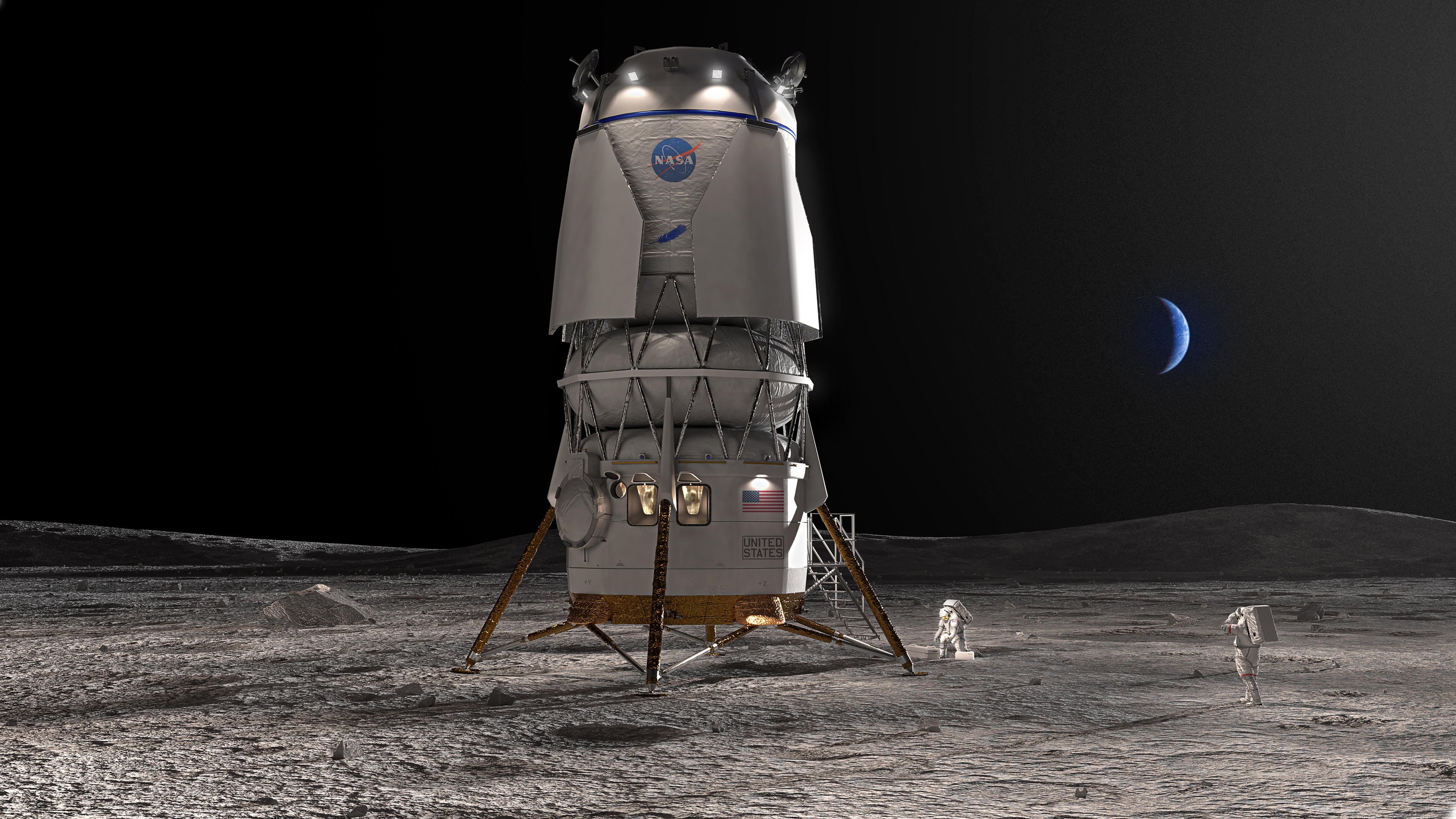Hello and welcome back to Max Q!
In this issue:
- Blue Origin lands major NASA contract
- News from SpaceX, and more
NASA picks Blue Origin-led team to build second human landing system on the moon, joining SpaceX
NASA has chosen a Blue Origin-led team to develop a second lunar landing system for the Artemis program, as the agency looks to provide competition with SpaceX and support long-term exploration of the moon.
The winning team includes Lockheed Martin, Draper, Boeing, Astrobotic and Honeybee Robotics. The contract is valued at $3.4 billion, but Blue Origin Vice President John Couluris said the company plans to contribute “well north” of that number — meaning the entire endeavor will likely cost at least $7 billion.
Blue Origin said it would develop a 52-foot tall lander it’s calling Blue Moon and land it on the lunar south pole. Blue Moon is sized to fit inside the payload fairing of Blue’s under-development New Glenn rocket. The Blue-led team is planning to attempt an uncrewed mission a year before it will take astronauts. Another version of the lander is also being designed to take as much as 30 metric tons of cargo mass to the lunar surface.
Shortly after the news was announced, Jeff Bezos tweeted that he was “honored to be on this journey” with the space agency.

Image Credits: Blue Origin / Blue Origin (opens in a new window)
More news from TC and beyond
- Astra was awarded an add-on launch contract with the U.S. Department of Defense for Rocket 4’s test flight. The company is continuing to face a shortening cash runway, according to its first-quarter financial results. (Astra/Astra)
- NASA is targeting a two-year overlap between the launch of private space stations and the decommissioning of the International Space Station in 2030. (Michael Sheetz)
- SpaceX hired NASA’s former head of human spaceflight Kathy Lueders as the company continues to develop its Starship launch system to return humans to the moon and beyond. (TechCrunch)
- Space Forge, a Welsh in-space manufacturing startup, has developed a satellite reentry system to enable rapid recovery and reuse of orbital factory spacecraft. (TechCrunch)
- Stoke Space has received multiple investments from In-Q-Tel, the venture capital arm of the Central Intelligence Agency. (TechCrunch)
- Stratolaunch submitted a $17 million bid for some of Virgin Orbit’s assets, including the modified Boeing 747 aircraft “Cosmic Girl,” as part of Virgin’s bankruptcy proceedings. (TechCrunch)
- United Launch Alliance is aiming to conduct a static-fire test of the Vulcan Centaur rocket soon, though the company still needs to complete its anomaly investigation before launch. (SpaceNews)
- Varda Space Industries, an in-space manufacturing startup, is in the process of raising $25 million at a $500 million post-money valuation. (TechCrunch)
Max Q is brought to you by me, Aria Alamalhodaei. If you enjoy reading Max Q, consider forwarding it to a friend.
Max Q: Double the fun by Aria Alamalhodaei originally published on TechCrunch
from TechCrunch https://ift.tt/hRAwWyc
via IFTTT
Comments
Post a Comment